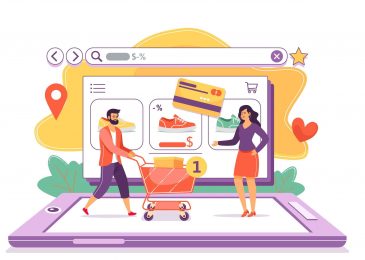What Are Top Causes of Customer Churn in Software Companies?
What Are Top Causes of Customer Churn in Software Companies?
Growing SaaS companies can’t afford to simply focus on attracting customers. The majority of your profit will come from the clients you can retain with ongoing subscriptions and memberships.
According to a Signalmind, it costs 6-7 times more to attract a new customer than to retain an existing one.
For software and SaaS companies that operate on a subscription-based model, a consistent stream of income means a lifeline to ensure consistent revenue so they can continue to provide their services to their users.
Also Read – Why Customer Retention is Important to Increase Profitability?
Unfortunately, while software solutions are more popular today than ever, your customers can be fickle. There are plenty of competitors out there fighting for their attention.
Fail to deliver the best results for your clients, and you could lose them.
Something as simple as a slow response to a customer query or a poor onboarding process could prevent you from holding onto your customers for longer.
Check out what are top causes of customer churn in software companies as below –
1. You’re Attracting the Wrong Leads –
Sometimes, high customer churn isn’t a sign that you’re not maintaining your software or client relationships properly. Instead, it’s an indicator you’re targeting the wrong leads, to begin with.
If you’re targeting the wrong customers, you’re focusing your attention on people who will never fully appreciate the best features of your product.
Users who don’t see the real value of your software or have no practical use for it over a longer period of time will most likely cancel their subscription as soon a possible.
Take a look at your customer personas. What kind of demographics are you targeting, and how does your target audience compare to the people in your customer list that spend the most money?
Consider asking your clients why they’re downloading your products or pay attention to the feedback you get from reviews for insights into what people really want from you.
Insights from customers who achieve great success with your software can help you pinpoint the exact kind of customers you should be targeting in the future.
You might even be able to carve out a niche you didn’t consider targeting before.
Once you know who your ideal customers are, share your personas with your sales team, and provide guidance on how they can qualify potential clients.
2. Customer Support is Lacking –
Modern-age customers are generally more digitally savvy than they used to be. However, that doesn’t mean they won’t need your help at times.
No matter how excellent your app might be, there’s always a risk that something might go wrong. When issues do occur, you need to be ready to respond quickly and effectively.
Look at your current customer support strategy. How can clients reach out to your team when they need help (i.e., SMS, phone call, email, live chat)? Are you offering the channel that your clients feel most comfortable with?
How quickly do you get back in touch when someone sends a query? Do your customers feel confident that you can get their software back up and running fast?
Remember that, especially in the B2B environment, your customers need a reliable and responsive partner to help them minimize losses or downtime in case of a glitch.
If your support team leaves your customers waiting for a response for hours or even days, they will lose trust in you and look for help and support elsewhere.
Customer experience is quickly becoming one of the most important differentiators for any brand. Make sure you’re not cutting corners with your service.
3. Your Clients Aren’t Reaching their Goals –
It is often said that customers don’t purchase products; they purchase solutions.
Customers purchase software memberships because they believe those tools can fix their most common problems. Your customers will come to you in search of specific resolutions.
If you’re not delivering the outcomes they’ve been looking for, they’ll drop your software and try something else.
The first step in making sure your customers achieve their goals is ensuring you’re clear about what your software can actually do.
Make the benefits obvious, and don’t promise anything you can’t deliver. This will only harm your brand reputation. Ensure the benefits are clear from the first contact with your customers.
Next, help your customers to take full advantage of everything your software has to offer.
Your onboarding strategy will be crucial here.
A good onboarding process shows your customer how the software works with things like guided videos and articles. This will help the customer succeed faster and with less friction.
The sooner your customer can start using the product confidently and achieve real results, the more likely are they to stick around past the free trial phase.
You could even get a professional from your team to contact each customer and find out whether they have any specific questions about the software before they dive in.
4. Your Competitors Are Offering Something Better –
Your customers are looking for the product that delivers the best results for the least expense. If they think they can get something better from a different brand, they often will.
If your clients are leaving you for your competition, this could be a sign that you need to rethink your value proposition or look for ways to improve your offering.
Maybe you could add a new feature to your software that your customers have been asking for recently? Perhaps you could look into providing different levels of software access depending on the needs of your customer.
For instance, you could create a “basic” subscription for those who only need the fundamental features and an “enterprise” version for larger brands.
The best way to ensure you’re actively appealing to your customers’ needs is to listen to your audience.
Listen to what they tell you about why they’re leaving when they unsubscribe from your software. Find out what they like most about the competition, and what they dislike too.
Keep in mind that, in many cases, the price is not the main reason why customers abandon a software solution.
If your competitor is slightly more expensive but offers better support or allows your users more customization, many users will be willing to pay extra to take advantage of these benefits.
Image Source – Stunning
You don’t necessarily need to charge less than your competitors. If you listen to your customers’ needs and find a way to add more value for money, your customers won’t have a need to look for greener pastures.
5. Your Product Keeps Suffering from Bugs –
Finally, sometimes your customers can’t wait around for you to get through the “teething pains” stage of releasing new software.
Although most consumers will expect the occasional bug when playing with an app on their smartphone or accessing cloud software, they also need you to fix those issues fast.
If it seems like you’re dealing with one problem after another, you’re going to lose your customers.
Ensure you have a team of developers and engineers on board who can run regular tests to ensure your software is working properly.
Pay attention to issue reports from your customers, and track the problems that arise most frequently, so you can focus on them straight away.
If you experience many bugs at once or have a significant issue that stops customers from using your service, get in touch and apologize.
Acknowledge the user’s problem and let them know you’re listening to their concerns. Keep them informed about how and when you plan to resolve the issue.
Customers are much more willing to be patient with brands that are transparent about their issues.
Take ownership of any problems and show your customers how you will avoid them in the future. Then do anything you can do to prevent the same problem from occurring ever again.
6. Reduce Your Churn Rate –
Customer churn is a common problem for any software company. Fortunately, there are ways to reduce your risk of losing valuable clients.
Investing in a better quality of service, regular software testing, improved onboarding, and better lead qualification can make a massive difference to your bottom line.
Remember, as you work on reducing churn, keep a close eye on which tactics work and which don’t, so you know where to spend your budget in the future.
By improving the service that you offer to your existing clients, you set yourself up for more success with new clients as well. This will put you on a great path towards consistent growth and a healthy revenue stream.
Author Bio –
Joe Peters is a Baltimore-based freelance writer and an ultimate techie. When he is not working his magic as a marketing consultant, this incurable tech junkie devours the news on the latest gadgets and binge-watches his favorite TV shows. Follow him on @bmorepeters
Also Read – Top 5 Steps to Improve Customer Retention Through Marketing






